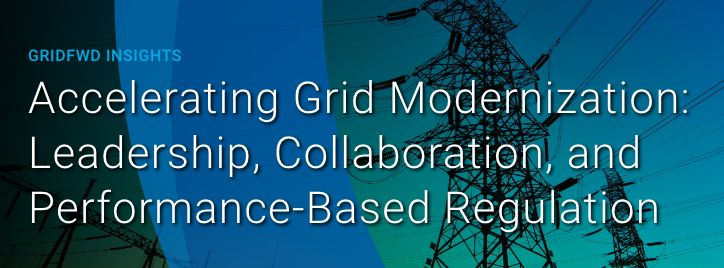We’re very excited to promote a series of blog posts authored by Cadmus that are exploring the themes and discussions from GridFWD 2018, which took place October 10-11, 2018 in Vancouver, BC. The first two post have just come online, and more are in the works. If you missed GridFWD 2018, here’s your chance to get a summary of its excellent content and interaction among industry leaders from across the Northwest, western Canada and beyond.

Most attendees at GridFWD 2018 bemoaned that they could attend only one of the three tracks at any one time. If that’s you, here’s a chance to pick up what you might have missed.
Part 1: Defining Grid Modernization
In its first post, Cadmus explored the definition of the somewhat complex and abstract concept of grid modernization. Bryce Yonker, Executive Director of Smart Grid Northwest, differentiates between the smart grid and grid modernization by noting that, although the two concepts share a portfolio of new and evolving technology, grid modernization is focused on incorporating technologies and the associated initiatives into the smart grid at scale.

Overall, Cadmus found the following key themes during the conference talks and discussions:
- Utility core values—specifically safe, reliable, and affordable power provision—are the highest priorities among many for the present and future grid.
- Regulatory environments need to evolve to enable successful grid modernization.
- Utility business models need to shift from being driven by large, single-focused investments to being driven by numerous multifaceted and holistic investments that integrate operations and planning efforts from all parts of utility organizations, pivoting from cost-of-service models to performance-based models to achieve outcomes driven by public policy goals.
- Distributed energy resources (DER) and storage infrastructure are proliferating; however, resources and planners for transmission and distribution, communications, and control are not equipped to support the DER and storage infrastructure, let alone to optimize their capacity to supply peak demand.
- Grid technology, which historically evolved in a well-defined operational and regulatory environment, is now coming from new sources including tech companies and consumer demand, and testing and implementing timely and innovative solutions is difficult within the old framework.
Read the post Defining Grid Modernization.
Part 2: Accelerating Grid Modernization: Leadership, Collaboration, and Performance-Based Regulation
In the second post, the authors discuss two particularly compelling topics emerged at the GridFWD 2018 conference and gained momentum across several presentations:
- What is the catalyst for accelerating elements of grid modernization?
- What transformations must occur at a utility level to pave the way?

For acceleration, the industry needs leadership effectively paired with stakeholder collaboration. National labs and nonprofit agencies such as the Regulatory Assistance Project (RAP) and Rocky Mountain Institute lay groundwork for understanding technology, running pilots, framing policy issues, and educating industry professionals. Within utilities and other organizations, leaders must also step up to drive innovation in grid and resource planning as well as cultivating an flexible organization.
This leads to the second key topic: utility business transformation through efforts such as performance-based regulation or ratemaking (PBR) and performance incentives mechanisms (PIMs). The GridFWD Policy and Markets session reviewed approaches to incentivize utility offerings, including approaches taken in Oregon, Hawaii and Minnesota.
Read the blog post Accelerating Grid Modernization on the Cadmus website to dig deeper into the paradigm shift that PBRs and PIMS can drive.



